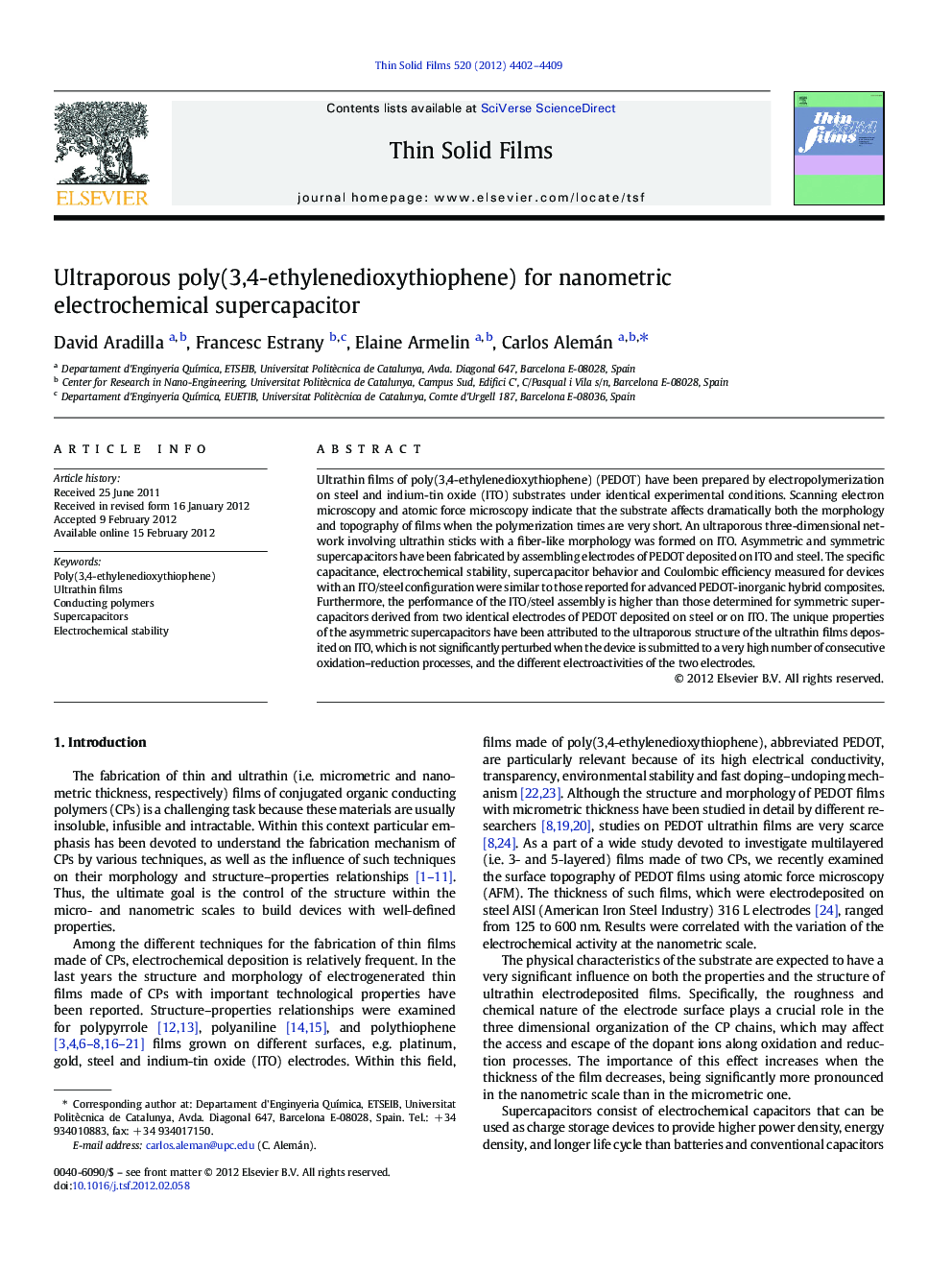| کد مقاله | کد نشریه | سال انتشار | مقاله انگلیسی | نسخه تمام متن |
|---|---|---|---|---|
| 1667481 | 1008851 | 2012 | 8 صفحه PDF | دانلود رایگان |

Ultrathin films of poly(3,4-ethylenedioxythiophene) (PEDOT) have been prepared by electropolymerization on steel and indium-tin oxide (ITO) substrates under identical experimental conditions. Scanning electron microscopy and atomic force microscopy indicate that the substrate affects dramatically both the morphology and topography of films when the polymerization times are very short. An ultraporous three-dimensional network involving ultrathin sticks with a fiber-like morphology was formed on ITO. Asymmetric and symmetric supercapacitors have been fabricated by assembling electrodes of PEDOT deposited on ITO and steel. The specific capacitance, electrochemical stability, supercapacitor behavior and Coulombic efficiency measured for devices with an ITO/steel configuration were similar to those reported for advanced PEDOT-inorganic hybrid composites. Furthermore, the performance of the ITO/steel assembly is higher than those determined for symmetric supercapacitors derived from two identical electrodes of PEDOT deposited on steel or on ITO. The unique properties of the asymmetric supercapacitors have been attributed to the ultraporous structure of the ultrathin films deposited on ITO, which is not significantly perturbed when the device is submitted to a very high number of consecutive oxidation–reduction processes, and the different electroactivities of the two electrodes.
► Ultrathin poly(3,4-ethylenedioxythiophene) (PEDOT) films show fiber-like morphology.
► The porosity of ultrathin PEDOT films induces a very high electrochemical stability.
► Asymmetric supercapacitors made of ultrathin PEDOT behave like hybrid nanocomposites.
Journal: Thin Solid Films - Volume 520, Issue 13, 30 April 2012, Pages 4402–4409